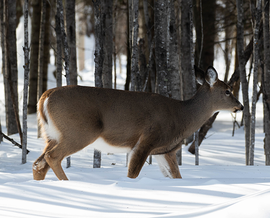
Please share your thoughts about deer populations
Beginning Monday, Jan. 23, we?re asking for public input on deer population goals in 23 deer permit areas in eastern and south-central Minnesota.
Opportunities for input will include an online questionnaire, a webinar and two in-person public meetings. We?re excited to hear your thoughts about deer population trends where you live, work and recreate.
The targeted DPAs this year are:
- DPAs 152, 155, 156, 157, 159, 172, 183, 221, 222, 225, 248, 249, 604 in the East Central Uplands goal block; and
- DPAs 219, 223, 224, 227, 229, 235, 236, 285, 338, 605 in the Sand Plain/Big Woods goal block.
The DNR establishes deer population goals ? how much of a population increase or decrease is desired in a particular DPA ? as part of managing the state?s wild deer.
Population goals established in this process will provide direction for deer management in DPAs for a 10-year period, with a midpoint review at the five-year mark. Goal blocks and the DPAs that comprise them are established based on similar habitat, land uses, deer populations and deer hunter distribution.
Find all the details, including about a webinar coming up on Monday, Jan. 23, on the DNR?s deer goal setting page.
Photo?courtesy of Alex Lamoreaux, iNaturalist
|
